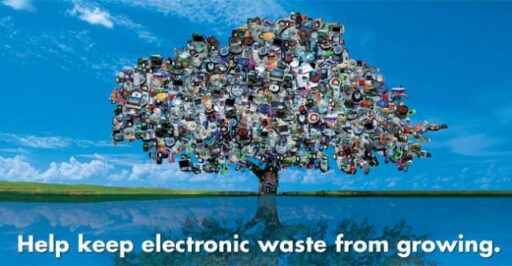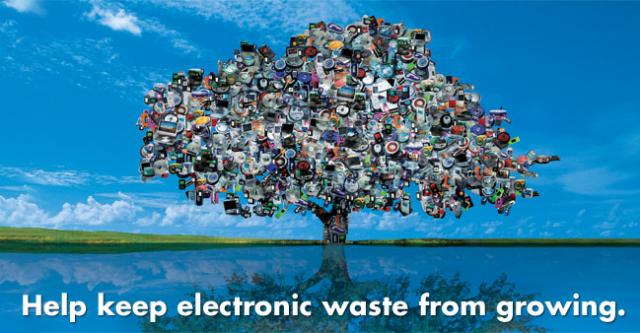Introduction
Briefly introduce the concept of e-waste and its environmental consequences.
Highlight the rapid growth of electronic devices and the resulting increase in electronic waste.
Section 1: The Problem with E-Waste
1 Definition of E-Waste
Explain what e-waste is and provide examples of electronic devices contributing to it.
Electronic waste, or e-waste, refers to discarded electronic devices and equipment. The improper disposal and management of e-waste can have significant environmental impacts. The key environmental issues associated with e-waste include:
- Toxic Substances:
- E-waste often contains hazardous materials such as lead, mercury, cadmium, and brominated flame retardants. When these substances leach into the soil and water, they can contaminate ecosystems and pose health risks to humans and wildlife.
2. Resource Depletion:

- Electronic devices contain valuable and scarce resources like gold, silver, copper, and rare earth elements. Improper disposal means that these resources are not being efficiently recovered and recycled, contributing to the depletion of natural resources.
3. Energy Consumption:
- The manufacturing and disposal of electronic devices require significant energy inputs. Extracting raw materials, manufacturing components, and treating e-waste all contribute to carbon emissions and energy consumption.
4. Landfill Space:
- E-waste often ends up in landfills, taking up valuable space and contributing to soil and water pollution. Many developing countries become e-waste dumping grounds, leading to environmental and health problems for local communities.
To address these environmental challenges, there is a growing focus on sustainable tech solutions and responsible e-waste management practices:
- Eco-friendly Design: Manufacturers can design products with eco-friendly materials, fewer hazardous substances, and modular components to facilitate easier repair and recycling.
- Recycling Programs: Implementing effective e-waste recycling programs can help recover valuable materials and reduce the environmental impact. Governments, businesses, and consumers can contribute to these efforts by responsibly disposing of their electronic devices through designated recycling channels.
- Extended Producer Responsibility (EPR): EPR policies hold manufacturers responsible for the entire life cycle of their products, including recycling and proper disposal. This encourages manufacturers to design products with recyclability in mind and invest in e-waste management systems.
- Circular Economy Practices: A circular economy approach involves designing products to be easily disassembled and reused. This approach aims to minimize waste by keeping materials and products in use for as long as possible through repair, refurbishment, and recycling.
- Awareness and Education: Raising awareness among consumers about the environmental impact of e-waste and the importance of responsible disposal can encourage environmentally conscious behaviors. Education programs can promote the proper recycling of electronic devices.
- Innovation in Recycling Technologies: Research and development of innovative recycling technologies can enhance the efficiency of recovering valuable materials from e-waste while minimizing environmental harm.
By adopting these sustainable tech solutions and responsible e-waste management practices, it is possible to mitigate the environmental impact of electronic waste and work towards a more sustainable future.







